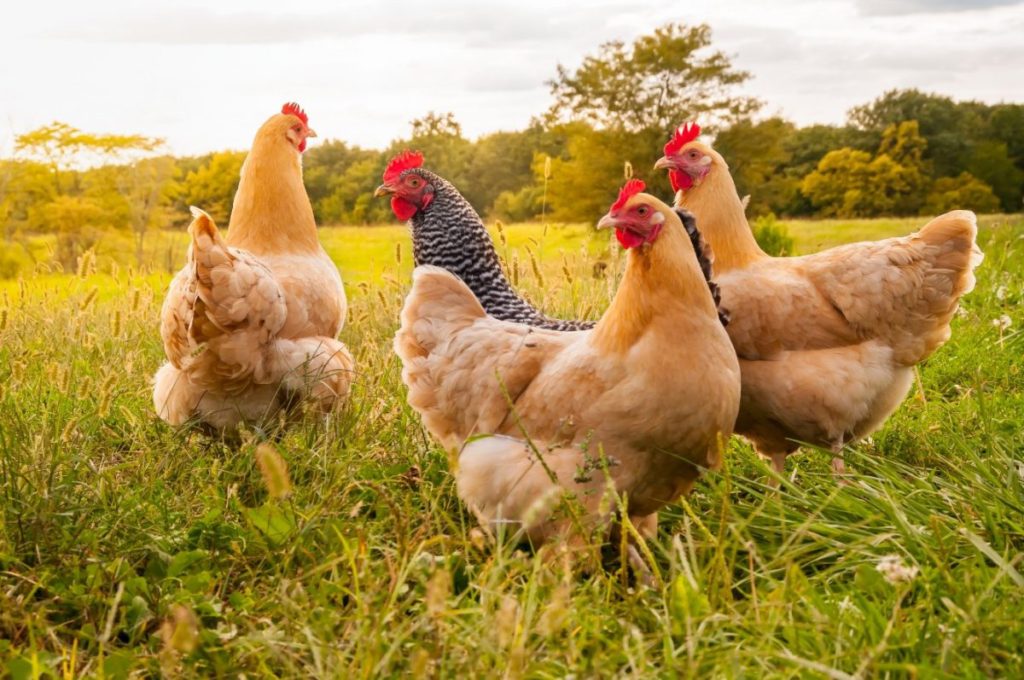Table of Contents
LITTLE RED HENS
The Little Red Hen is an old folktale traditionally used to emphasize the importance of the work ethic. (“If any man will not work, neither let him eat.”) This can backfire. My kids, when first exposed to the Hen, thought she was a sanctimonious twit.
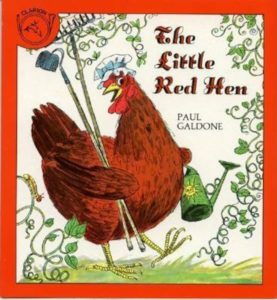
|
In Paul Galdone’s Little Red Hen (Houghton Mifflin, 2011), the hen, cat, dog, and mouse are roommates, but cat, dog, and mouse slothfully sleep on the couch all day while hen does the work of wheat-planting, harvesting, grinding, and cake-baking. At the end, the hen eats the cake all by herself, thus providing an object lesson on the benefits of pitching in to do chores. My kids’ response: “Well, why didn’t she tell them that they wouldn’t get any cake if they didn’t help out?” Good question. For ages 3-6. |
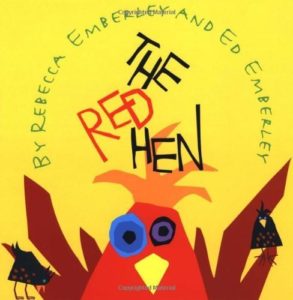 |
The Red Hen by Rebecca Emberley and Ed Emberley (Roaring Brook Press, 2010) stars a great paper-collage red hen, an unhelpful cat, rat, and frog, and a Splendid Cake (recipe included). For ages 3-6. |
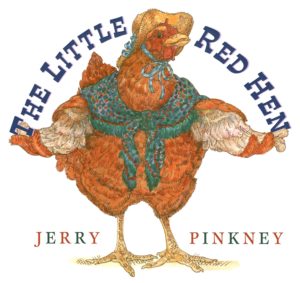
|
In Jerry Pinkney’s elaborately illustrated Little Red Hen (Dial, 2006), the hen (who wears a straw hat and flowered shawl) lives with her five chicks; the help-refusing dog, rat, goat, and pig with their refrains of “Not I!” are merely neighbors. The message here is enhanced by the nature of the hen’s appeals: she doesn’t merely plead for help, but points out each animal’s special gift – the dog, for example, is good at digging – which emphasizes the potential benefits of teamwork. For ages 4-8. |
| Florence White Williams’s version of The Little Red Hen, originally published in 1918, can be read online at Project Gutenberg. | |
| Enchanted Learning’s The Little Red Hen is a rebus puzzle. Fun for beginners (with help). | |
| The Little Red Hen lesson plan has discussion questions and activities, among them baking bread in a bag and making a cool “retelling mural.” | |
| EconEdLink’s The Little Red Hen has an online illustrated version of The Little Red Hen, a bread recipe, an experiment to determine why bread rises, and many helpful links to bread and the bread-making process. Targeted at grades K-5. | |
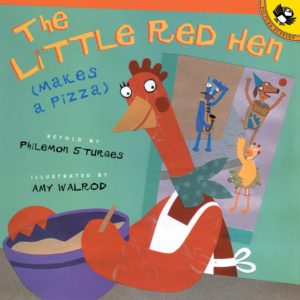
|
In Philemon Sturges’s The Little Red Hen (Makes a Pizza) (Puffin, 2002), the hen, refused help by the duck, dog, and cat, goes to the store for pizza supplies and finally manages to make a pizza – which she shares, since duck, dog, and cat offer to clean up and do the dishes. The colorful cut-paper illustrations are filled with hilarious details: the duck wears a rubber-turtle inner tube and a bathing cap; the hen has a pair of bunny slippers on her clothesline and a can of worms in her cupboard. For ages 4-8. |
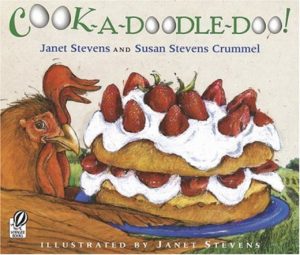
|
In Janet Stevens’s Cook-a-Doodle-Doo! (Sandpiper, 2005), Big Brown Rooster and friends Turtle, Iguana, and Pig – using the cookbook of Rooster’s great-grandmother, the Little Red Hen – manage to produce a Magnificent Strawberry Shortcake. It’s not easy, though: when Turtle asks for flour, Iguana dashes off to pick a petunia; when asked to beat an egg; Iguana moves in with a baseball bat. A recipe is included. For ages 4-8, with help. |
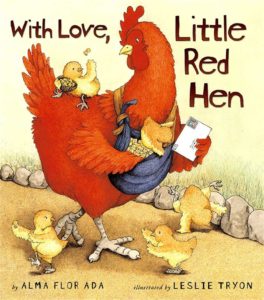
|
In Alma Flor Ada’s With Love, Little Red Hen (Atheneum Books for Young Readers, 2004), the Little Red Hen and her seven chicks have just moved to the storybook neighborhood of Hidden Forest and the Hen is trying to get help from her neighbors – among them Little Red Riding Hood, Goldilocks, Peter Rabbit, and the Three Little Pigs – to plant her garden. Like Ada’s earlier books, Dear Peter Rabbit and Yours Truly, Goldilocks, the story is told through a series of letters. For ages 5-9. |
WHY DID THE CHICKEN CROSS THE ROAD?
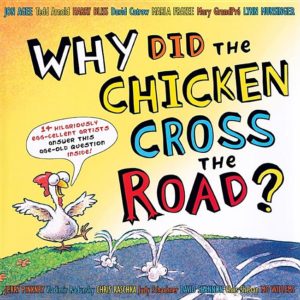
|
Why Did the Chicken Cross the Road? (Dial, 2006), a collaboration of fourteen talented artists, is a marvelous collection of unexpected illustrated answers to the classic joke. Harry Bliss’s frantic chicken flees invading zombie chickens from Mars; Jon Agee’s chicken (and the rest of the city) flee Godzilla-like lizards; Mo Willems’s harried chicken confesses his crime to the police; and Jerry Pinkney’s Little Red Hen heads for a tea party. Readers are bound to come up with creative alternative answers (and chickens) of their own. For ages 5-9. |
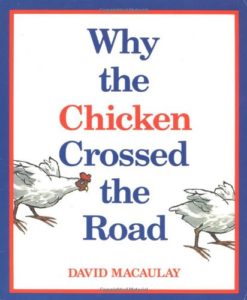
|
In David Macaulay’s picture book Why the Chicken Crossed the Road (Houghton Mifflin Books for Children, 1987), the road-crossing chicken sets off a chain of disastrous events – a cow stampede, a bridge collapse, a bandit escape, a bathroom explosion – finally looping back around to the chicken again. A hoot for all ages. |
| Why Did the Chicken Cross the Road? is an online game in which kids try to maneuver a chicken through four lanes of highway traffic to get to the worm on the other side. | |
| At this website, the question Why did the chicken cross the road? is answered as if by famous philosophers, writers, and political figures. (Emily Dickinson: “Because it could not stop for death.”) |
